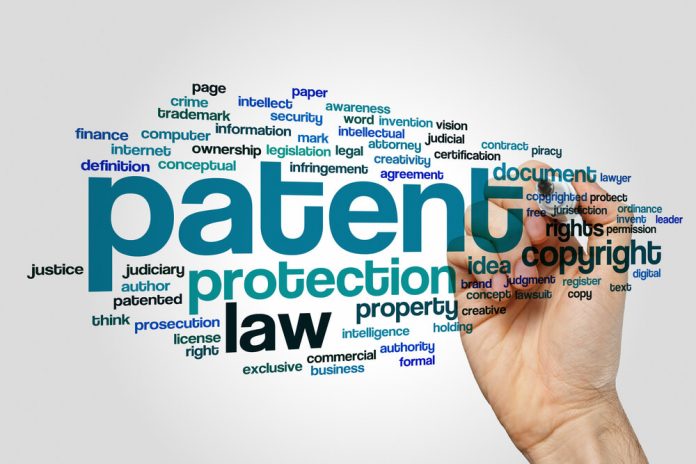This article is written by Parshav Jain who is pursuing a Certificate Course in Intellectual Property Law and Prosecution from LawSikho.
Table of Contents
Introduction
The advent of the internet has brought the world closer to one another than it used to be. Computer technologies, one of the most emerging creations, have made it possible for the internet to expand worldwide. Furthermore, certain types of technological products are distributed and utilized throughout the world. Intellectual property rights associated with it need to be protected from unauthorized use or exploitation across the globe.
It isn’t a straightforward feat to handle multinational patent portfolios. Developing markets and emerging scenarios are becoming very relevant and play a vital role in a company’s IP strategy. Patent portfolio gives value to the company or business in various aspects. Efficient control of the patent portfolio may be crucial to defending brands from those that could infringe and retain market share. By means of licenses and sales, a well-organized patent portfolio can become the source of revenue.
The patter of portfolio approach is clearly highlighted and narrowly separated into three main parts:
- Preparation: It is like planning one’s company for iTIP journey, since it offers a collection of fundamental procedures that can be considered to be introduced to help capture and ensure the company’s achievements and goals.
- Implementation: Under this phase, registered patent rights are created by the method and strategies.
- Monetization: This is the final aspect and carries the utmost gravity, since monetization is all about one’s objective at the end of the day. This tab elucidates all common ways/methods of producing IP revenue to make it work.
Preparation
As a starting point, it’s important to plan about the relationship between parties and IP in general backed by the knowledge of a new business plan. It is easy to think about patents in isolation as a tee box, perhaps to keep directors and investors comfortable, per contra, doing so significantly decreases the probability of sales generation and ultimately exposes a company to risks from competitors. Intellectual property, and in particular trends, should instead be an integral part of ’one’s business strategy, since this analysis of the mind map suggests certain key considerations of a general business plan.
Business strategy also deals with intellectual property, but when working with other, facets of IP, currently most of the fields such as looking at the research and development wing of trends and their ownership, will be an important concern.
For the success of a corporation, patent planning is very important, just as each chess piece has its own importance, so no matter how many pieces you have on a board, unless you have a strategy to use them, you can not succeed. As in chess, it is a good starting point to continuously review and adjust tactics in terms of what other people/teams are doing to win the game with a processor caching to catch creativity in your business.
One of the moves to capture creativity/innovation is to identify what competitors are doing, what they have made widely available, that published information is referred to as prior art and is using the assessment of the patentability of any future.
It can be observed that preparation & planning is crucial aspect of the patent lifecycle and introduces a number of processes that can be implemented by a company to capture and capitalize on the innovations.
Implementation
The phase of implementation includes processes and strategies used to generate registered patent rights. Post the invention is the time to draft your first patent application ideally a patent attorney should be involved in the innovation capture stage particularly if research is ongoing within a company as they are experienced to spot patentable innovation. However, if this has not been the case, now’s the time to onboard them. They get more detailed in-depth and ultimately can concentrate on consumer goods.
The basic elements in a patent application of the claims are description and drawings of the claims in order to define the extent of of protection offered by the pattern and are generally considered one of the most important parts of the application. The patent attorney typically commences by drafting the claims of a patent application; they usually are a bit of to and fro between a patent attorney and the management & team until each party is comfortable with the claims and then goes on to the description. The description is how the invention/technology can be put into practice. ’It is really important that it must be transparent to explicitly educate the reader in sufficient detail about how the invention should be carried out.
Examples are a perfect way to enunciate how the invention works, and it becomes almost mandatory. It is also significantly important to remember that it might be appropriate to amend the scope of the claims depending on the details in the description during the examination of the patent application in pharmaceutical and life science fields as a means of showing that the benefit of your invention is genuinely accomplished. In furtherance, drawings are typically a graphic illustration or a photo of the invention or perhaps graph shape of data which may be used to support the invention along with the description.
The question that arises is, where are you going to file? This can be complicated by many factors at this stage, but the basic considerations are to see where the business is based, i.e., whether in the inventor’s country of nationality or where the invention took place. You ought to understand your filing plan.
Lastly, what are the other countries that you would like to seek patent protection in? Again this is heavily influenced by the ’company’s business plan and commercial goals what I want to share with you today is a patent ’attorney’s go to filing strategy this essentially acts as a starting point for discussions and outlines what ’you’re able to do within the patent system now.
We can conclude by saying that the implementation parts of the patent lifecycle and introduced a number of processes that can start yet that you can use to start generating IP rights.
Monetization
Monetization at the end of the day this is what ’it’s all about! One of the main reasons for getting a patent is to generate revenue out of it. There are a plethora of ways in which an inventor can derive revenues from patents, but the main ones are licensing or pooling or selling IP. Revenue drive for enforcement licensing is essentially an agreement that you allow a third party to infringe your patents and take no action against them, in return for some sort of compensation this could be a set amount per year or more typically a percentage of their gross sales as a rule of thumb.
Inventor should be expecting to get around three to seven percent of gross sales as a royalty however the exact amount is dependent upon the specific sector, and much to influences and especially how good you are in negotiation licenses can be drafted to fit your business plan. They can be of any duration they can require certain milestones to be met for them to remain in place and they can require minimum only annual payments they can also place restrictions on certain products, certain fields of technology or even certain global territories.
Licences are generally of three types, i.e., exclusive license, non-exclusive license and sole license. An exclusive license allows the licensee to use the invention often precluding the patentee from using it. A sole license may allow the inventor to exploit rights in the invention. Inventor can have more than one non-exclusive licensing, but obviously, the compensation received from the licenses will be heavily dependent upon the type of license granted. Many SMEs consider licensing as an option as they can derive revenue from their patent assets without engaging in the manufacture or production of the product itself, as well as utilizing the third party’s existing distribution channels and suppliers that bring their customer base and brand.
Often inventors also look at partnering in the pharmaceuticals industry, after the initial research and drug development to avoid the substantial costs of clinical trials they look at cross-licensing as an attractive alternative to avoid all parties from being excluded from markets. Patent pooling is an efficient way of dealing. By pooling patents, licensor and licensees are able to mitigate the costs involved together with a need to negotiate with multiple license holders a great example of patent pooling is one blue.
Inventor can also sell their patents. This is really cashing out of the game. You can decide that ’you’d rather have the money upfront and dispense of having to administer licenses.
An inventor could always include a self-license while selling or while entering into a merger & acquisition deal, so that inventor can continue to monetize its patents portfolio. This requires inventor to know the true value of its invention. Often any of these three methods are adopted to help an inventor to find the true value of its patent. The “cost method valuation” is based upon the costs that an inventor have incurred developing the technology a potential buyer can avoid these costs by purchasing the technology directly from an inventor.
The “market value method” looks at the value of the patented product or process from the marketplace based upon its recent track record all by assessing the recent sale or licensing of similar products however it can be hard to find. Published data for other IP transactions is not easily available as they are usually confidential, however, there are third-party companies that can help to achieve this. The “income or economic benefit method” is another method that predicts the potential of the future revenue that a patented product can produce and factors in risks and financial costs to give a net present value. However, an inventor wants to churn maximum benefit from its patent portfolio, for that, an inventor have to be sure and shall understand the true value before entering into selling or licensing deal.
Hence, we conclude that having a proper monetization strategy in place is an important aspect in maintaining a global patent portfolio so that the inventor can generate a return on its investment done in IP. A portfolio with effective strategies typically gives more value to the business. Obtaining and maintaining a global patent portfolio will place a tremendous burden on businesses with financial capital. Therefore, it is very important to develop effective IP strategies that further support one’s business. Thus, by securing its assets, defending them against its competitors and balancing its asset management expenses, a properly maintained patent portfolio must produce income for a business or entity.
Students of Lawsikho courses regularly produce writing assignments and work on practical exercises as a part of their coursework and develop themselves in real-life practical skill.
https://t.me/joinchat/J_0YrBa4IBSHdpuTfQO_sA
Follow us on Instagram and subscribe to our YouTube channel for more amazing legal content.












